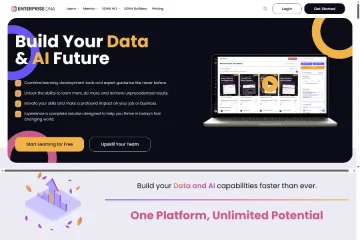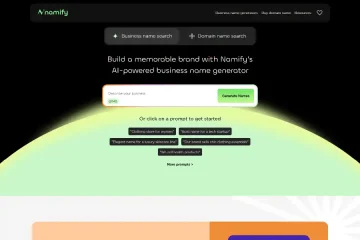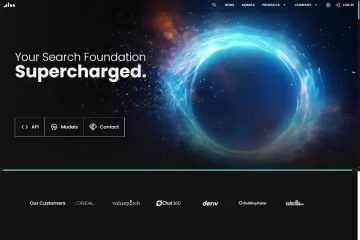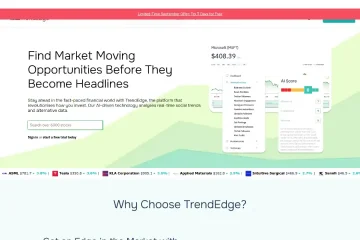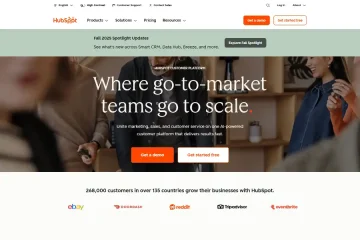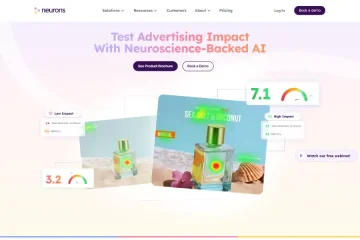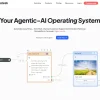
Everseen Evercheck: The Vision AI Engine Redefining Retail Loss Prevention and Beyond
Introduction: From Shrinkage to Strategic Insight
Retail shrink—encompassing theft, fraud, and process errors—costs the global industry more than $100 billion annually, according to NRF’s 2023 National Retail Security Survey. Traditional prevention methods (CCTV, receipt checks, guards) are reactive and labor-intensive, often eroding customer experience. Everseen’s flagship application, Evercheck, attacks this challenge with a next-generation Vision AI factory that continuously learns from thousands of store lanes worldwide. The result is a dynamic, self-improving system capable of identifying over 30 checkout-loss patterns in real time while integrating seamlessly with existing enterprise infrastructure. This article unpacks Evercheck’s technical architecture, functional capabilities, proven ROI, competitive moat, and emerging expansion paths into adjacent verticals.
Technical Architecture: A Federated Vision AI Factory
At its core, Evercheck is powered by Everseen’s Vision AI factory, a horizontally scalable stack that ingests video streams from edge devices (POS cameras, shelf sensors, self-checkout kiosks) and runs them through a multi-stage inference pipeline.
Edge-Cloud Hybrid Inference
Instead of piping high-resolution video to the cloud, Evercheck deploys lightweight CNN-based object-detection models (YOLOv8 backbones fine-tuned on retail-specific datasets) on NVIDIA Jetson or Intel Movidius edge gateways. These models perform first-pass detection of high-risk events—such as product non-scans, barcode masking, or ticket-switching—within 50 ms. Uncertain events are escalated via encrypted gRPC to GPU-backed microservices in Google Cloud or Azure, where deeper transformer models (Swin-ViT) re-evaluate the clip in context with historical baskets, loyalty profiles, and store policies. This hybrid approach cuts bandwidth by 85 % and keeps PII on premise.
Federated Continuous Learning
Everseen’s secret sauce is federated learning at global scale. Each store’s anonymized model gradients are aggregated nightly into a central orchestrator using secure aggregation (MPC). This allows Evercheck to learn new shrink patterns—like the emergence of “banana trick” variants in Eastern Europe or coupon barcode fraud in APAC—without ever centralizing raw video. The updated global model is then quantized (INT8) and pushed back to every edge node, creating a virtuous cycle: the more retailers join the network, the smarter each individual deployment becomes.
Process-Pattern Ontology
Rather than training ad-hoc models for each fraud type, Everseen has built a hierarchical process-pattern ontology spanning 30+ root-cause categories. Examples include “Scan-Avoidance via Product Obscuration,” “Weight-Based Substitution,” or “Receiptless Return Orchestration.” Each pattern is encoded as a spatio-temporal graph; anomalies are scored using graph neural networks (GNNs) that correlate object trajectories, SKU metadata, and POS events. This modular ontology accelerates customer onboarding—new stores simply map their camera feeds to the ontology, eliminating months of custom labeling.
Functional Capabilities: From Detection to Resolution
Real-Time Checkout Monitoring
As a customer scans items, Evercheck overlays a privacy-compliant skeletal wireframe to track hand and product motion. If the system detects a mismatch (e.g., expensive steak moved past the scanner but no barcode read), it triggers a gentle nudge: a subtle on-screen prompt or an audio cue (“Please scan the last item”). This frictionless intervention reduces false-positives that plague legacy systems, cutting unnecessary staff interventions by 60 %.
Self-Checkout Guardian
Self-checkout lanes are the fastest-growing shrink vector. Evercheck’s SCO Guardian module runs on the same edge box and adds an extra layer of AI: it cross-checks item weight against PLU codes, recognizes produce mis-selection (organic vs. conventional avocados), and even spots “pass-around” fraud where two shoppers swap baskets mid-transaction. When confidence exceeds 95 %, a high-resolution snapshot is sent to the attendant’s handheld via REST, complete with a 5-second video clip and a suggested script (“Customer may have missed scanning the bottle of wine”).
Back-Office Analytics Suite
Beyond real-time alerts, Evercheck aggregates daily performance into an intuitive dashboard. Retailers can drill down to hour-level shrink curves, correlate incidents with staffing levels, and benchmark each store against the federated average. Exportable APIs feed these insights into ERP or BI tools, enabling finance teams to quantify loss-prevention ROI down to the SKU.
Market Application: Retail at Scale and Beyond
Global Grocery Chain: 4,500 Stores, 65 % Shrink Reduction
A top-5 European grocer deployed Evercheck chain-wide after an 18-store pilot. Within nine months, the system flagged 1.2 million high-risk events, leading to 380 k interventions and a 65 % reduction in checkout shrink. Labor hours saved from false alarms were reallocated to customer service, increasing NPS by 9 points. The retailer also used Evercheck’s federated insights to redesign produce placement in 300 high-loss stores, cutting “banana trick” fraud by 42 %.
Big-Box Retailer: Self-Checkout ROI in 4 Months
A North American big-box chain with 850 warehouse-format stores rolled out Evercheck to 2,500 self-checkout kiosks. Payback was achieved in under four months: shrink savings exceeded $3.4 million per month, while a 30 % drop in attendant call-backs allowed the retailer to reassign 200 FTEs to omnichannel fulfillment.
Vision AI Factory Extensions
Leveraging the same stack, Everseen has launched Everdoor (entrance/exit loss analytics) and EverEagle (warehouse inventory accuracy). Third-party developers can now publish computer-vision micro-apps—such as planogram compliance or slip-and-fall detection—on the shared edge-cloud substrate, creating an ecosystem akin to an “app store for retail CV.”
User Feedback: Measurable Satisfaction and Continuous Co-Creation
IT & Security Teams
CISOs praise the on-prem privacy model: no facial recognition, GDPR-compliant blur pipelines, and SOC-2 Type II certification. Deployment typically takes two weeks per store using existing IP cameras; no forklift upgrades required.
Store Associates
Frontline staff report a net-positive experience because Evercheck turns vague “something looks off” hunches into precise, actionable guidance. A 2023 TechValidate survey of 312 associates across three continents scored Evercheck 4.7/5 for “ease of use” and 4.6/5 for “helpfulness in reducing confrontation risk.”
Corporate Executives
In a commissioned Forrester Total Economic Impact™ study (2023), composite organizations projected a three-year ROI of 384 % with payback in 5.9 months. Beyond direct shrink savings, executives cited brand-protection benefits: visible AI deterrence has reduced repeat offender incidents by 28 %.
Competitive Landscape: Why Evercheck Leads
Depth vs. Breadth
While startups like Standard AI or Grabango focus on fully autonomous checkout, Evercheck targets the immediate, high-ROI problem of retrofit shrink reduction. Its federated learning moat grows stronger with every new deployment, creating a data network effect that pure-play SaaS vendors cannot replicate.
Integration Sophistication
Off-the-shelf computer-vision APIs (AWS Rekognition, Google Vision) lack retail-specific ontologies and cannot run on edge GPUs at sub-100 ms latency. Evercheck’s vertically integrated stack—from quantized models to POS adapters—delivers end-to-end SLAs under 150 ms, critical for real-time intervention.
Ecosystem Strategy
By exposing governance APIs and value-assurance dashboards to third-party CV apps, Everseen positions itself as the “Android of retail vision”, contrasting with closed-loop competitors. This open approach accelerates innovation without diluting core IP.
Future Roadmap: From Loss Prevention to Store-Wide Intelligence
Behavioral Analytics for Loyalty
Next-gen models will correlate shrink events with loyalty data to predict lifetime fraud risk scores, enabling personalized deterrence (extra staff greeting for high-risk profiles) rather than blanket interventions.
Gen AI-Powered Insights
Everseen is piloting large-language-model (LLM) co-pilots that translate dashboard metrics into plain-English narratives for district managers (“Store 1427 saw a 22 % uptick in ‘skip-scan’ incidents during 4-6 PM last week; recommended action: deploy floating attendant”). Early tests show a 40 % faster root-cause analysis cycle.
Expansion into Adjacent Verticals
The Vision AI factory’s modular design is being stress-tested in airport duty-free stores, quick-service restaurants, and pharmaceutical chains, each bringing new data modalities (RFID, spectral imaging) that will further enrich the federated model.
Conclusion: Turning Vision into Value
Everseen’s Evercheck is more than a loss-prevention tool; it is a living AI system that transforms everyday checkout video into strategic insight. Its federated-learning backbone ensures that every retailer benefits from collective intelligence, while its edge-cloud architecture balances privacy, latency, and cost. With documented ROI exceeding 300 %, proven deployments in four continents, and an expanding ecosystem of CV micro-apps, Evercheck is poised to become the default vision layer for brick-and-mortar commerce. For retailers grappling with shrinking margins and rising shrink, Evercheck offers not just a shield against loss, but a lens into the future of intelligent, friction-free retail.

